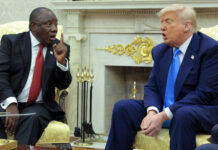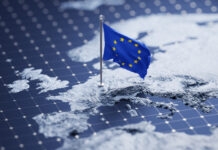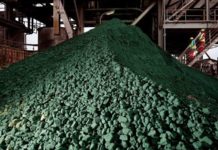
US copper prices reached historic highs on Tuesday after Donald Trump announced Washington would impose 50% tariffs on the industrial metal, marking the latest escalation in the president’s trade offensive.
“Today we’re doing copper,” Trump declared before a cabinet meeting, confirming he believed the tariffs would reach 50%. The comments opened another battlefront in the administration’s extensive trade wars, following Trump’s letters to over a dozen nations setting tariff rates effective August 1, said the Financial Times in its coverage.
Financial markets reacted dramatically to the announcement, with copper prices jumping 17% in New York trading – the most significant single-day increase recorded since data collection began in 1988. The surge reflects investor concerns about supply chain disruptions and potential shortages.
The prospect of elevated tariff rates triggered a scramble to secure supplies and lock in prices for copper, which is essential in electronics, construction and industrial equipment. Commerce Secretary Howard Lutnick told CNBC he expected the copper tariffs to be implemented by late July or early August.
New York copper futures surged to $5.69 per pound, establishing an all-time closing record. However, London Metal Exchange copper prices fell 2% on Wednesday morning, reflecting concerns that tariffs would reduce US copper consumption and weaken global demand, said the Financial Times.
Prices in New York jumped to an “unprecedented” 25% premium over futures on the London Metal Exchange, said Daniel Hynes, a senior commodity strategist at ANZ.
Citi analysts predicted official confirmation of the 50% rate within weeks and implementation within 30 days. They described this as “a watershed moment for the copper market in 2025” that would “abruptly close the window for further significant US-bound copper shipments.”
The copper tariff proposal builds upon existing trade investigations launched under 1962 legislation, which grants the administration authority to restrict imports deemed harmful to national security, according to an earlier report by Bloomberg News. Officials argue that excessive reliance on foreign suppliers in critical sectors poses strategic risks.
Trump’s trade agenda extends beyond metals to encompass pharmaceuticals and semiconductors, though drug manufacturers may receive breathing space before facing similar restrictions. Trump indicated a transitional period of 12 to 18 months would allow companies to shift production facilities to American soil.
This metals-focused approach operates independently from broader country-specific trade measures, which Trump confirmed would commence in August. The Section 232 investigations must conclude before the sectoral tariffs can be formally implemented.
Chile dominates refined copper exports to the US, accounting for approximately 70% of imports by value, followed by Canada and Peru. Rosario Navarro, president of Chile’s industrial business lobby, warned that 50% tariffs could cause “substantial worsening” in trade conditions.
Pierre Gratton, president of the Mining Association of Canada, said billions of dollars’ worth of energy infrastructure, such as copper piping, was shipped to the US as part of an integrated North American industry. He added the US did not have enough copper refining capacity or smelters and relied on Canadian imports, noting such high tariff rates would “hurt US manufacturing”.
JP Morgan analysts noted “the market will be surprised” by the level of the proposed levy, adding that the Wall Street bank had pencilled in a 25% tariff rate for imports of refined copper, said the Financial Times.
The tariff announcement followed Trump’s letters to 14 trading partners, including Japan and South Korea, threatening steep levies without trade deals by August 1st. The president indicated he would announce trade measures affecting at least seven additional countries on Wednesday.
The administration’s strategy reflects growing concerns about America’s industrial dependence on overseas manufacturing, particularly in sectors considered vital to economic and defence interests.











